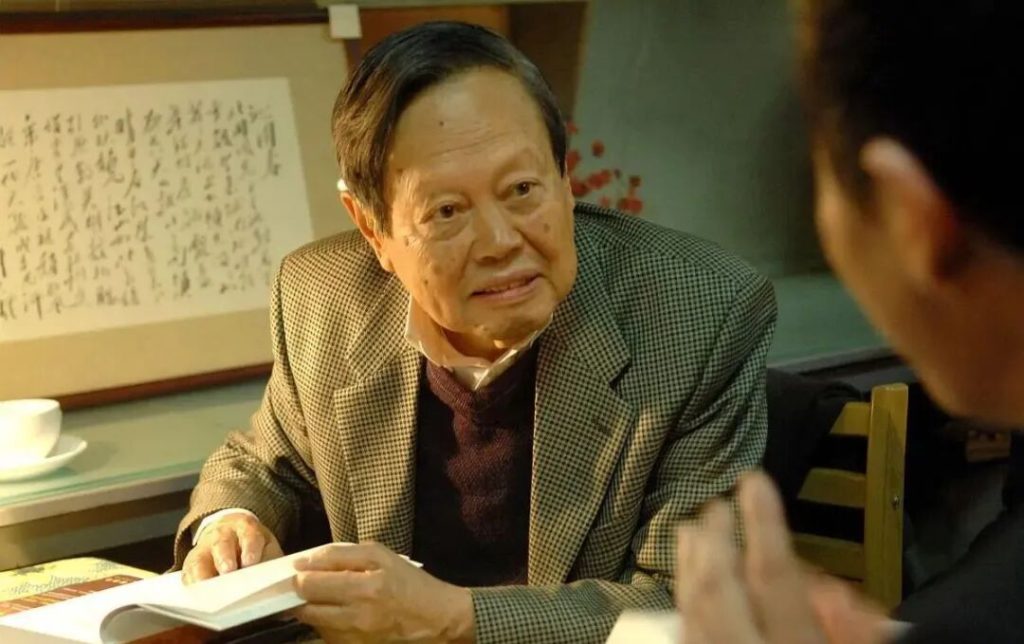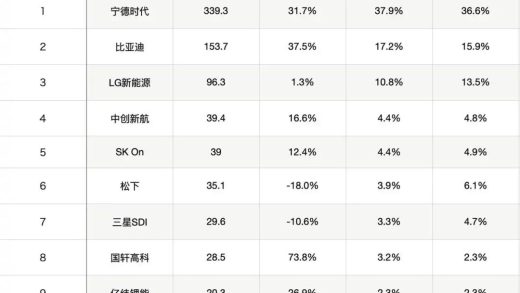
Positive Comments: The Three Bridges Built by Yang Zhenning for China’s Technological Development Have a Profound and Irreplaceable Impact
The passing of Yang Zhenning is not only a loss to the physics community but also an important milestone in the history of China’s technological development. Looking back on his century – long life, the “three bridges” he built for China’s science and technology cause – the bridge of international academic communication, the bridge of education for cultivating top – notch talents, and the bridge of faith for reshaping the scientific spirit – are among the most precious legacies of China’s technological progress since the 20th century.
The First Bridge: Breaking the Isolation and Building an “Ice – Breaking Passage” for East – West Academic Exchange
In the early 1970s, China’s scientific and technological community stagnated due to historical reasons, and international academic exchanges were almost completely interrupted. As the first top – tier Chinese – American scientist to visit New China, Yang Zhenning, with his international prestige and academic status, became the key figure to break this deadlock. His public statement in the magazine Physics Today showed the world the current situation of Chinese science. Through the “Committee on Academic Exchange with China”, he funded more than 1,200 scholars to pursue further studies in the United States. Most of these “seeds” later became the backbone of China’s scientific and technological community. This “going – abroad” training model not only allowed Chinese scholars to access international frontiers but also formed a “talent feedback” through their return, reserving core strength for the technological take – off after the reform and opening – up.
The Second Bridge: Deeply Engaged in Education and Cultivating a “Fertile Soil for Talents” in China’s Technology Industry
Yang Zhenning’s contribution to China’s science and technology goes far beyond short – term academic exchanges and lies more in the long – term layout of the education system. In 1978, his suggestion to set up a computer software major at the University of Science and Technology of China directly promoted the early enlightenment of domestic computer education. In 1996, he sold his property in the United States and donated the money to Tsinghua University to support the construction of the Institute for Advanced Study, providing a stable platform for basic physics research. In 2004, he invited Yao Qizhi to return to China to establish the “Yao Class”, which is the most influential part of his educational legacy in the industrial field. Over the past 20 years, the top scholars in the AI field such as Chen Danqi and Wu Jiajun, as well as technology entrepreneurs like Yin Qi (Megvii) and Lou Tiancheng (Pony.ai) trained by the Yao Class, have become the core forces in China’s cutting – edge industries such as artificial intelligence and autonomous driving. This talent transformation chain from academia to industry is a vivid practice of Yang Zhenning’s concept of “combining science and education”.
The Third Bridge: Spiritual Leadership and Reshaping Chinese People’s Scientific Confidence and Exploration Courage
Yang Zhenning’s Nobel Prize is not only a personal honor but was also regarded by his father, Yang Wuzhi, as a landmark event to “eradicate the sense of inferiority among Chinese people”. The significance of this “psychological construction” is particularly crucial in the field of science and technology. When Chinese scholars realize that “we can also compete on the world’s top – tier stage”, they can truly be inspired to innovate. The growth trajectories of a generation of scientists such as Zhang Chaoyang confirm the power of this spiritual motivation. In addition, at the age of 82, he insisted on standing to teach basic courses to undergraduates, jointly initiated the “Science Exploration Award” to support young scholars, and maintained an “uncompromising” academic stance in the debate on colliders, all of which convey a core belief: science requires a practical and realistic attitude and a sense of responsibility rooted in the local context. This spiritual legacy can nourish the future of China’s science and technology more than specific scientific research results.
Negative Comments: There Are Still Unfinished Thoughts in the Technological Legacy under the Constraints of the Times and Personal Choices
Although Yang Zhenning’s contributions are “unparalleled”, from the historical dimension and the complexity of technological development, there are also boundaries and limitations in his legacy worthy of discussion.
The “One – Way” Nature of Academic Exchanges and the Limitations of Subject Coverage
The academic exchanges promoted by Yang Zhenning were mainly concentrated in fields such as physics and computer science, and in the early stage, they were mainly about “sending scholars abroad”. This model was indeed efficient in a specific historical period (such as the period of technological isolation), but it also had the problem of “one – wayness”. The mechanism for international top – tier scholars to actively come to China for exchanges was not established synchronously. In addition, other disciplines such as chemistry and life sciences benefited relatively less, which was directly related to Yang Zhenning’s personal academic background (theoretical physics). Technological development requires cross – disciplinary integration. If more extensive subject exchanges had been promoted at that time, a more comprehensive innovation ecosystem might have been cultivated earlier.
The Controversy over the Balance between Basic Research and Application Demands
Yang Zhenning’s view against building a large – scale collider, although based on the practical consideration that “limited funds should be invested in high – return fields”, also triggered a discussion on whether “basic research needs to be pre – planned”. Although basic physics research (such as colliders) has no immediate application value in the short term, it is the cornerstone for human exploration of the laws of nature, and its derivative technologies (such as particle detection technology and data processing technology) can often promote the progress of multiple industries. This trade – off between “short – term benefits” and “long – term value” is essentially an eternal proposition in technological development. Yang Zhenning’s opposing view reflects a practical spirit, but it also reminds us that the formulation of science and technology strategies needs to take into account different dimensions to avoid the limitations of a single perspective.
The “Non – Replicability” of Personal Influence and the Lag in Institutional Construction
Yang Zhenning’s success largely depends on his personal international prestige, cross – cultural communication ability, and in – depth understanding of China’s scientific and technological needs. This “person – driven” model is efficient but difficult to replicate. For example, without a subsequent “talent return incentive system” and “optimization of the local scientific research environment”, the “sending scholars abroad” program he promoted might lead to a brain drain. The success of the Yao Class is also closely related to Yao Qizhi’s top – tier academic status and the resource support of Tsinghua University. This reminds us that technological development cannot rely solely on “key figures” but also needs to establish sustainable institutional guarantees (such as academic exchange mechanisms, talent evaluation systems, and scientific research investment mechanisms).
Suggestions for Entrepreneurs: Draw Innovative Motivation from Yang Zhenning’s Technological Legacy
Yang Zhenning’s legacy belongs not only to the scientific community but also provides profound inspiration for entrepreneurs. Considering his contributions and limitations, the following suggestions are worth noting:
1. Attach Importance to the Long – Term Cultivation of the “Talent Chain” Instead of Short – Term “Poaching”
The success of the Yao Class proves that the cultivation of top – tier talents requires full – chain investment from education to industry. If entrepreneurs want to make breakthroughs in technology – intensive fields (such as AI and hard technology), they should not only focus on “poaching ready – made talents” but also cooperate with universities to establish targeted training mechanisms (such as joint laboratories and scholarship programs) and even participate in interest guidance at the basic education stage (such as science popularization activities). This “source cultivation” model can reserve long – term talents more in line with the enterprise’s needs.
2. Make Good Use of International Resources but Adhere to “Localized” Innovation
Yang Zhenning introduced advanced technologies and concepts through international exchanges but always emphasized “serving Chinese needs”. In the context of globalization, entrepreneurs should actively connect with international technologies, capital, and talents but avoid “copying models”. For example, entrepreneurs in the AI field need to develop localized applications according to the characteristics of the Chinese market (such as population structure and industrial scenarios) instead of simply replicating the Silicon Valley model.
3. Balance Short – Term Gains and Long – Term Investments and Respect the Value of Basic Research
The controversy over Yang Zhenning’s opposition to the collider is essentially about the wisdom of “resource allocation”. When formulating strategies, entrepreneurs need to clarify the “short – term survival line” of the core business and the “long – term moat” of technology R & D. For example, hard – technology enterprises can invest a portion of their profits in basic technology pre – research (such as materials science and algorithm optimization). Even if there is no immediate return, it can reserve capabilities for technological breakthroughs in the next 5 – 10 years.
4. Drive Corporate Values with the “Scientific Spirit”
Yang Zhenning’s qualities such as “seeking truth from facts”, “respecting academia”, and “inspiring the youth” are exactly the cultural genes that innovative enterprises need most. Entrepreneurs should avoid short – sighted “pseudo – innovation” (such as concept hype and data fraud), encourage the team to “endure loneliness” to solve practical problems, and at the same time, convey the scientific spirit through internal training and external cooperation (such as joint research with universities) so that technological innovation can truly serve social needs.
Yang Zhenning’s century – long life is an epic of “serving the country with science”. What he left behind is not only specific scientific and technological achievements but also the spiritual wealth of “openness, pragmatism, innovation, and responsibility”. For entrepreneurs, the value of this wealth may be more precious than any business case. It reminds us that true innovation starts from the exploration of truth, is achieved through the sense of responsibility to the local area, and ends with the belief in the future.
- Startup Commentary”Building LLMs: The Knowledge Graph Foundation Every AI Project Needs”
- Startup Commentary”The 17th Year of Tmall Double 11 and the New Map Rewritten by AI”
- Startup Commentary”How to Prepare Your Data for Artificial Intelligence”
- Startup Commentary”Small and Medium-sized Banks: “Cutting the Tail” in Loan Assistance”
- Startup Commentary”The Six AI Giants on Stage: AGI Is No Longer a “Future” Thing”





